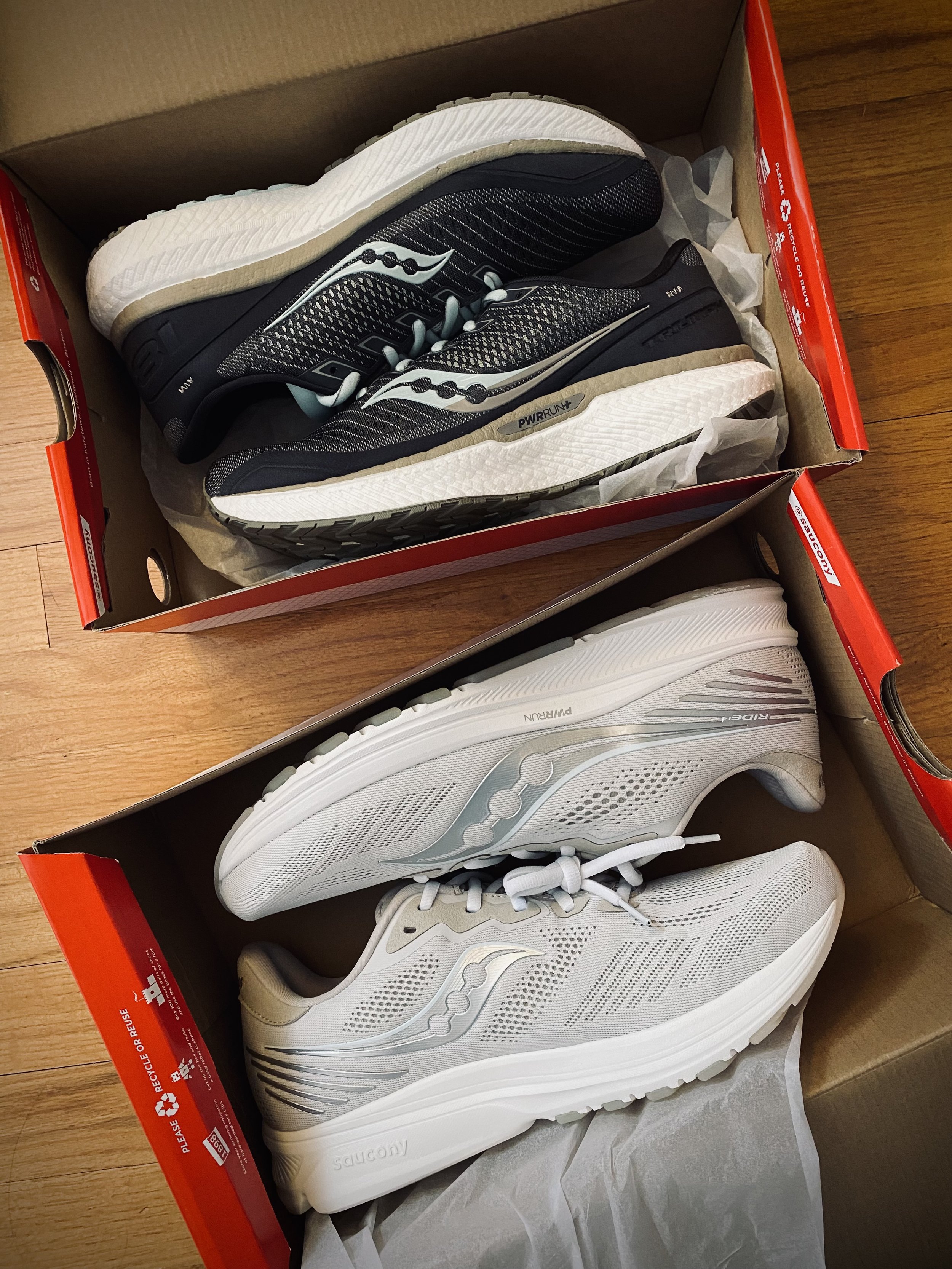Running Shoes: What You Need
Time for a major update on my previous running shoe wardrobe advice! In the past couple years, breakthroughs in shoe technology have changed the way shoes look and work. So here are my new recommendations:
Everyday Training: What You Need
One quality pair of runner shoes.
Get fitted at a specialty running shop by an expert. Pick the ones that feel the best even if they don’t look the nicest. Make sure that your toes never contact the front of the shoe (otherwise, say goodbye to your toenails).
I do not recommend flat or “zero-drop” shoes for anyone unless you’re already used to wearing flat shoes. Zero-drop is harder on the calves and achilles. I generally recommend 4-8mm offset.
If you’re not already attached to a specific model or brand of shoe, I recommend looking for a pair of running shoes with new generation foam (not traditional EVA). Read more here for more info on new generation foams. (Employees of running specialty shops will understand if you request new generation foam.)
Optional: Consider purchasing a second pair of every day runners, ideally in a different model. Alternating between 2 different pairs will extend the life of your shoes because it allows more time for the foam to decompress between each run before being pounded on again. And if the styles are different, you have the added benefit of two slightly different rides. When we adapt to two different styles of training shoes (gradually) our legs and feet become stronger and more resilient.
Workouts and Racing: What You Need
One pair of Super Shoes.
The days of super minimal and feather-light racing shoes are long gone. Now it’s all about the STACKS. You’ll use super shoes for long runs and workouts as well as races. If you don’t want to do any races ever, I still recommend getting a pair because of the benefits they provide (faster paces, shorter recovery time, less muscle trauma).
Don’t just order the nike vaporflies online. Do your homework. Check out the Carbon Plated Running Shoe Resource Page on Doctors Of Running website! Almost every brand has their own model of super shoe now, and they offer slightly different fits and feels. One model does NOT fit all.
When to Retire a Pair
The lifetime of a shoe should be based on how much they’re worn rather how long we’ve owned them.
The shoe’s main purpose is to offer support and cushioning. Over hundreds of miles or kilometers the foam material in our shoes becomes quite compressed and starts to break down. Shoes that offer more cushioning and/or are stiffer and more supportive will generally last longer. The new generation “super foams” will outlast traditional EVA midsoles.
The person wearing the shoe also makes a difference. For example, my husband weighs at least 30 pounds more than than an elite distance runner. He’s going to pound that foam cushioning down in fewer miles than someone who weighs much less than he does wearing the exact same shoe in the same size. Different landing patterns also play into how our shoes wear out.
As a general rule, we can expect to retire running shoes between 300-500 miles of use. (This number may change as we learn more about how well the new super foams hold up.)
A Fresh Pair
Try to anticipate the end of one pair of shoes instead of waiting until they’re totally shot before buying a new pair. Prepare to transition into a new pair by wearing them around the house and out for a walk before wearing them to run even if you buy the exact same model you’re currently wearing.
If your favourite model has been discontinued or updated, take extra time (several days or more) walking around in the new pair before running in them for the first time. This applies to any new shoe you purchase. DO NOT immediately wear them for every run. Give your body time to tell you gently if it needs more time to adjust to a new shoe. Evaluate how you feel not only during a run but later in the day and the next day after trying a new shoe.
Pay special attention to changes in heel offset when moving to a new pair, as a lower offset can quickly lead to calf or achilles problems if the transition is too abrupt.
Nicole Sifuentes is a full-time Running Coach for adults of all ages and abilities. She is a former professional runner and 2-time Olympian, and Certified Strength and Conditioning Specialist. Read more about her services, and schedule your free coaching consultation.

